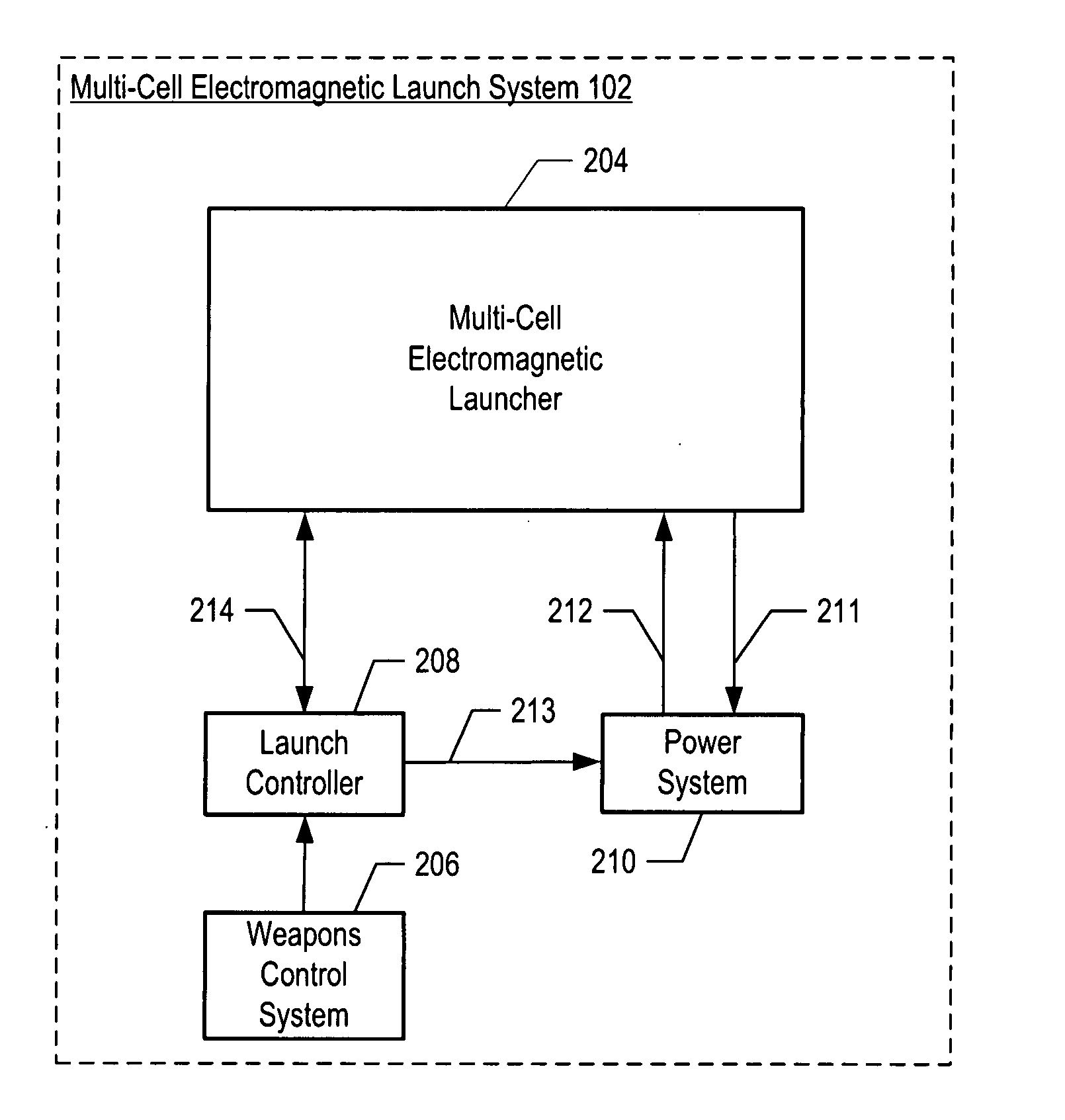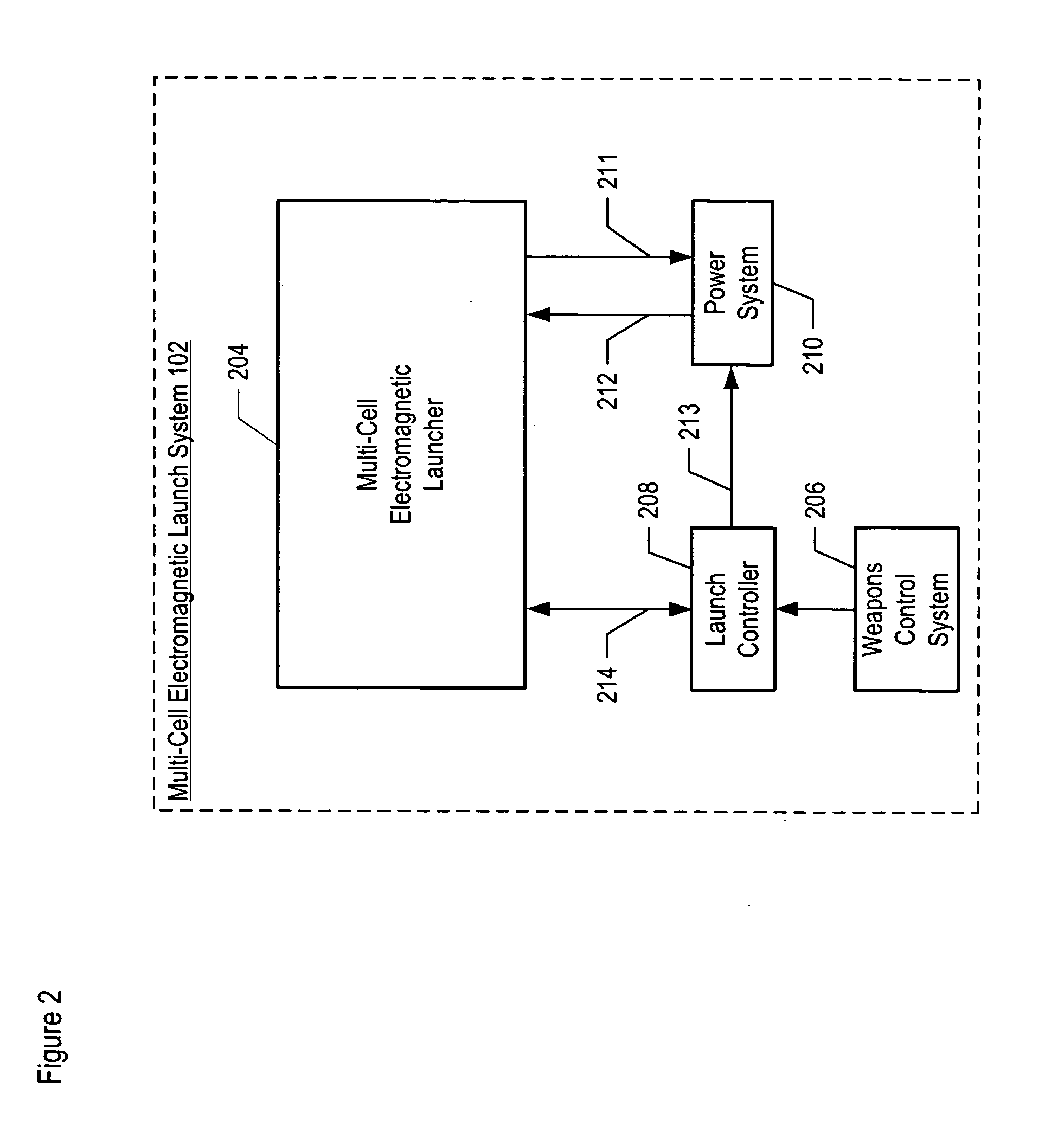Electromagnetic missile launcher
a technology of electromagnetic and missile launcher, which is applied in the field of missile launcher, can solve the problems of increasing the risk of attack, affecting the ability of the missile launcher to perform routine tasks, and affecting the ability of the missile to exit the engine, so as to avoid some of the costs and disadvantages
- Summary
- Abstract
- Description
- Claims
- Application Information
AI Technical Summary
Benefits of technology
Problems solved by technology
Method used
Image
Examples
Embodiment Construction
[0018]FIG. 1 depicts a representational diagram of a naval launch system in accordance with the illustrative embodiment. Although launch system 102 is mounted on the deck of a warship, it will be clear to those skilled in the art, after reading this disclosure, how to make and use alternative embodiments of the present invention in which launch system 102 is terrestrially-based or is mounted on another type of vehicle (e.g., a truck, a railroad car, a submarine, a space vehicle, a satellite, etc.)
[0019]FIG. 2 depicts a schematic diagram of the salient components of launch system 102. Launch system 102 comprises multi-cell electro-magnetic launcher 204, weapons control system 206, launch controller 208, power system 210, return power bus 211, propulsion current bus 212, signal line 213, and data bus 214.
[0020] Launcher 204 is a system that has the capability to house and expel one or more missiles upon command. The system expels each missile from its cell using an electromagnetic c...
PUM
 Login to View More
Login to View More Abstract
Description
Claims
Application Information
 Login to View More
Login to View More - R&D
- Intellectual Property
- Life Sciences
- Materials
- Tech Scout
- Unparalleled Data Quality
- Higher Quality Content
- 60% Fewer Hallucinations
Browse by: Latest US Patents, China's latest patents, Technical Efficacy Thesaurus, Application Domain, Technology Topic, Popular Technical Reports.
© 2025 PatSnap. All rights reserved.Legal|Privacy policy|Modern Slavery Act Transparency Statement|Sitemap|About US| Contact US: help@patsnap.com



